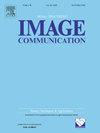基于扩散模型的无监督图像超分辨递归网络
IF 2.7
3区 工程技术
Q2 ENGINEERING, ELECTRICAL & ELECTRONIC
引用次数: 0
摘要
无监督图像超分辨率通过消除配对高分辨率和低分辨率图像的需要,为现实世界的应用提供了明显的优势。本文提出了一种专门为无监督学习设计的新体系结构,由循环分支和扩散分支组成。循环分支集成了上采样和下采样网络,从未配对的高分辨率和低分辨率输入生成伪配对图像。同时,扩散分支结合了两个独立的扩散模型来细化这些伪对,共同建模图像重建和退化过程。这种协同设计增强了伪对的真实性,丰富了重建图像的细节。无监督学习的一个关键挑战是缺乏明确的标签监督,这经常导致不准确的颜色恢复。为了解决这个问题,我们引入了色彩一致性损失来调节循环分支并提高色彩保真度。通过端到端联合培训,两个分支机构相互补充,实现高质量重建。实验结果表明,该方法可以有效地处理现实世界中的低分辨率图像,为图像超分辨率提供了鲁棒性和实用性的解决方案。本文章由计算机程序翻译,如有差异,请以英文原文为准。
Unsupervised image super-resolution recurrent network based on diffusion model
Unsupervised image super-resolution offers distinct advantages for real-world applications by eliminating the need for paired high- and low-resolution images. This paper proposes a novel architecture specifically designed for unsupervised learning, consisting of a cycle branch and a diffusion branch. The cycle branch integrates an upsampling and a downsampling network to generate pseudo-paired images from unpaired high- and low-resolution inputs. In parallel, the diffusion branch incorporates two independent diffusion models that refine these pseudo pairs, jointly modeling the processes of image reconstruction and degradation. This collaborative design enhances the authenticity of the pseudo pairs and enriches the detail in the reconstructed images. A key challenge in unsupervised learning is the lack of explicit label supervision, which often leads to inaccurate color restoration. To address this, we introduce a color consistency loss that regulates the cycle branch and promotes color fidelity. Through joint end-to-end training, the two branches complement each other to achieve high-quality reconstruction. Experimental results demonstrate that the proposed method effectively handles real-world low-resolution images, providing a robust and practical solution for image super-resolution.
求助全文
通过发布文献求助,成功后即可免费获取论文全文。
去求助
来源期刊

Signal Processing-Image Communication
工程技术-工程:电子与电气
CiteScore
8.40
自引率
2.90%
发文量
138
审稿时长
5.2 months
期刊介绍:
Signal Processing: Image Communication is an international journal for the development of the theory and practice of image communication. Its primary objectives are the following:
To present a forum for the advancement of theory and practice of image communication.
To stimulate cross-fertilization between areas similar in nature which have traditionally been separated, for example, various aspects of visual communications and information systems.
To contribute to a rapid information exchange between the industrial and academic environments.
The editorial policy and the technical content of the journal are the responsibility of the Editor-in-Chief, the Area Editors and the Advisory Editors. The Journal is self-supporting from subscription income and contains a minimum amount of advertisements. Advertisements are subject to the prior approval of the Editor-in-Chief. The journal welcomes contributions from every country in the world.
Signal Processing: Image Communication publishes articles relating to aspects of the design, implementation and use of image communication systems. The journal features original research work, tutorial and review articles, and accounts of practical developments.
Subjects of interest include image/video coding, 3D video representations and compression, 3D graphics and animation compression, HDTV and 3DTV systems, video adaptation, video over IP, peer-to-peer video networking, interactive visual communication, multi-user video conferencing, wireless video broadcasting and communication, visual surveillance, 2D and 3D image/video quality measures, pre/post processing, video restoration and super-resolution, multi-camera video analysis, motion analysis, content-based image/video indexing and retrieval, face and gesture processing, video synthesis, 2D and 3D image/video acquisition and display technologies, architectures for image/video processing and communication.
 求助内容:
求助内容: 应助结果提醒方式:
应助结果提醒方式:


